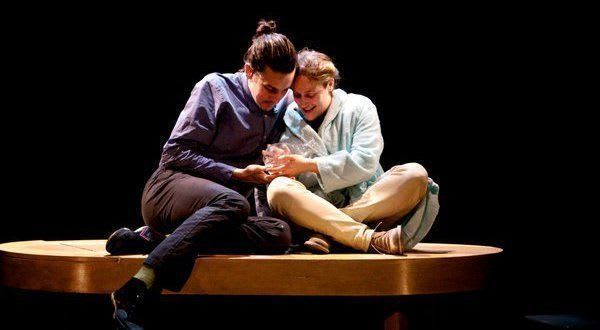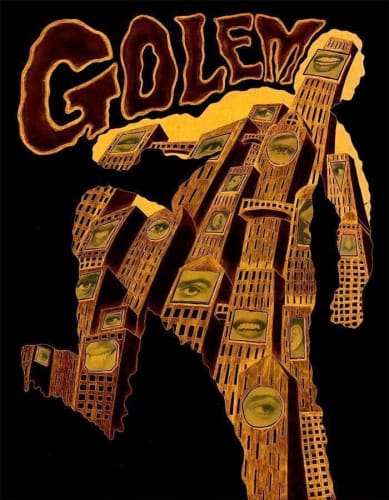Who is Pip Hambly? A profile
Pip Hambly is a woman of parts: writer, mime artist, clown, theatre maker and actor. I first encountered her in Golem, a darkly fabular piece performed by a cast of quirky characters against an animated backdrop.
In person, she has a gentle grace which is hard to reconcile with the grubby little accounts clerk she portrayed in the eerie setting of the Bristol Old Vic. Under the monstrous influence of consumerism, we watch her mutate from gauche adolescent into insufferable fashionista. Anaemic and hunched, a ghoulish man-child loping forward into the nightmarish unknown, her physical performance is never less than compelling.
As a woman of parts, it is no surprise she gets offered many of them, too. This year she appeared in a sell-out run of Cleite at the Galway Theatre Festival, a site-specific song, mask and movement piece depicting a moment in the life of a Claddagh fisherwoman. She played a war photographer in Be Brave and Leave for the Unknown, a largely silent performance probing questions of bravery, and her own Arts Council funded solo show, The Kinkens, is due to appear at the Edinburgh Festival in August.
She has worked with the English National Opera and has toured widely across Europe as well as parts of Asia and South America. She continues to work in collaboration with Chimera in a dance and theatre piece called Careful, which depicts the working lives of five over-stretched nurses working within the NHS. For this role, she drew heavily on her former life as a paediatric nurse.
So what prompted this shift from the stable, pragmatic world of nursing, to the precarious and chaotic one of performance? “There was a need to look at the world in a different way. It wasn’t that I wasn’t happy nursing, but there was this whole other layer of creative response to the world that wasn’t being allowed out.”
She uses the term ‘crushed idealist’ to describe her brief foray into healthcare, and her decision to transfer out and retrain at LISPA was a relatively sudden one. The London International School of Performing Arts offered her a grounding, based on the teachings of Lacoq, in the physical languages of mask, mime, movement and clown. She speaks with obvious enthusiasm about her time there. Much of the first year was spent in silence, in a bid to ‘remove psychology’ and get back to ‘essential movement’ and the ‘elements of nature’. The second year provided opportunities to devise her own work.
As a traditional hack, and occasional stage actor, I am slightly mystified by the multi-form process of physical creation she describes. I ask if she sees herself primarily as one kind of performer over another. She demurs. “I don’t want to be one of these jack of all trades, master of none. I’d love to get really good at something but I still think it’s a little bit too early to say ‘this is what I do’.” This is modest of her. Barely out of her twenties, she has already played the lead in an internationally acclaimed production and, as a theatre-maker, accrued a number of sought after grants and residences.
As I discovered during the course of our interview in the heart of Bristol—the canal glimmering in the sun beneath us, the seagulls screeching ceaselessly above—this demurral is typical of her. Always articulate, there is nevertheless something curiously open-ended and contingent to her responses, as if she is unwilling to trust to language the slippery business of nailing down meaning. But this, I realise, is key to understanding how she devises and creates. As her web site explains, she deals in "shifting perspectives, metamorphic identities and kaleidoscopic realities". Her body does the articulating, and the language flows in afterwards.
As you would expect of her one-woman show, The Kinkens is defiantly uncategorizable and encompasses mime, dance, clown and music, as well as increasingly futile moments of speech, to explore the experience of living beside a young person with depression. Kinkens is the hopeless but endearing radio show host who attempts to answer Jill’s unanswerable questions in a series of bumbling broadcasts.
It is a touching and funny performance, handling the heaviest of questions with the lightest of touches. Warm-hearted but also, if you see it that way, heart-breaking. Like the experience of depression itself, the piece has a deceptively quiet force that creeps up on you. As a piece of theatre, it seems particularly well suited to Edinburgh, in the run-up to which I managed to catch up with her.


